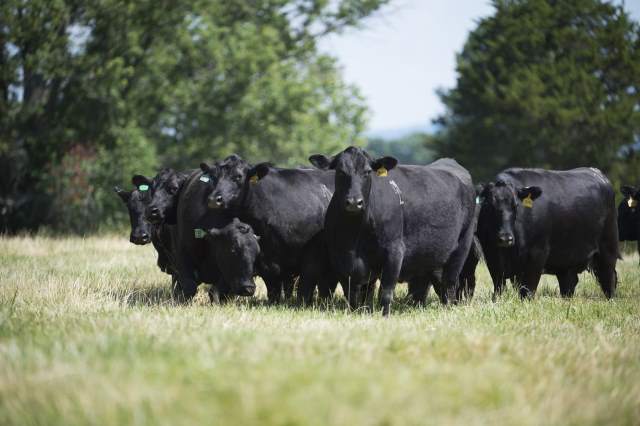October 12, 2016

Any beef producer who’s been in the business a while has seen it happen. There’s a group of heifers from a certain year that just seem to be better than the rest of the herd. Then there’s that other group of heifers, the ones that are poorer than everything else.
“Now we know why,” Ron Scott, director of beef research for Purina Animal Nutrition, told me. He and I were visiting in the aftermath of a recent visit to the Purina research farm outside of St. Louis, Mo.
“The big ah-ha moment that we’re finding out is if cows have less stress during pregnancy, they have a better calf crop,” he says. “And, not only does it affect the calf crop right then, but close-outs at the feedyard, it influences fertility of the replacement heifers. And all of that has to do with the type of environment that calf had when its mama was pregnant.”
It’s a phenomenon known as fetal programming, and it has the potential be a paradigm-changer in the art and practice of cowherd management.
It’s called fetal programming because of the cascade of specific events that occur during fetal development, Scott says. “There’s a specific hierarchy in the programming of events,” he says, “and under extreme stress, or in some cases under moderate stress, it can cause an individual, when it’s born, to perform differently.”
While some stress is very difficult to manage, such as extreme heat or extreme cold, other stresses, such as nutrition, are not. For example, if a cow is shorted on nutrition during the first trimester, the diseases and performance problems that can occur in the calf are different than if the cow is shorted on groceries in the second or third trimester, Scott says.
The reason why is because different organs and systems are developing at different stages of fetal growth. For example, organs develop during the first trimester while muscle development occurs during the second trimester. “It has to do with gestational nutrition and gestational stress. And then the first few months of life after an individual is born also influences the outcome we have,” Scott says.
So his recommendation is to keep cows on a level plane of nutrition throughout pregnancy. “It’s easier and cheaper to keep condition on cows than to try to build it. But because of the forage that many cattlemen do not have, in combination with bad weather, it’s very difficult if not impossible to keep cows from losing weight during the winter.”
But anything you can do to help your cows maintain good body condition before winter blows in can be a game-changer, he says. “Body condition is basically like a big winter parka on a cow. And that will protect her when winter comes through and you might have some challenges with forage resources.”
Based on a poll at beefmagazine.com, however, fetal programming has yet to become a commonplace idea in cattle country. While the online BEEF polls are not scientific, they are insightful as a window into the thoughts, ideas and opinions that cattle producers have on a variety of subjects.
When asked, “Have you incorporated the idea of fetal programming into your cowherd nutrition program,” 46%, or 56 of the 120 responses, said yes. However, 36% responded with "what is fetal programming?" and 17% said no.
Scott, however, thinks the concept has a lot of merit and value for the beef business as it looks to the future.
“As an industry, we’re charged with producing more meat for the world,” he says. “How can we get that done and not go broke? Well, this is one way to do it, to influence gestational nutrition and the environment of that developing calf. And it looks like the outcomes can be very, very dramatic.”
You might also like:
4 questions to ask before marketing 2016 calves
Seven keys to ranch profitability
Burke Teichert's top 5 tips on bull selection
Young ranchers, listen up: 8 tips from an old-timer on how to succeed in ranching
You May Also Like



